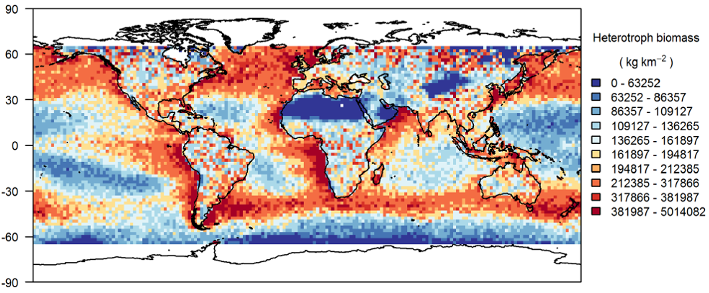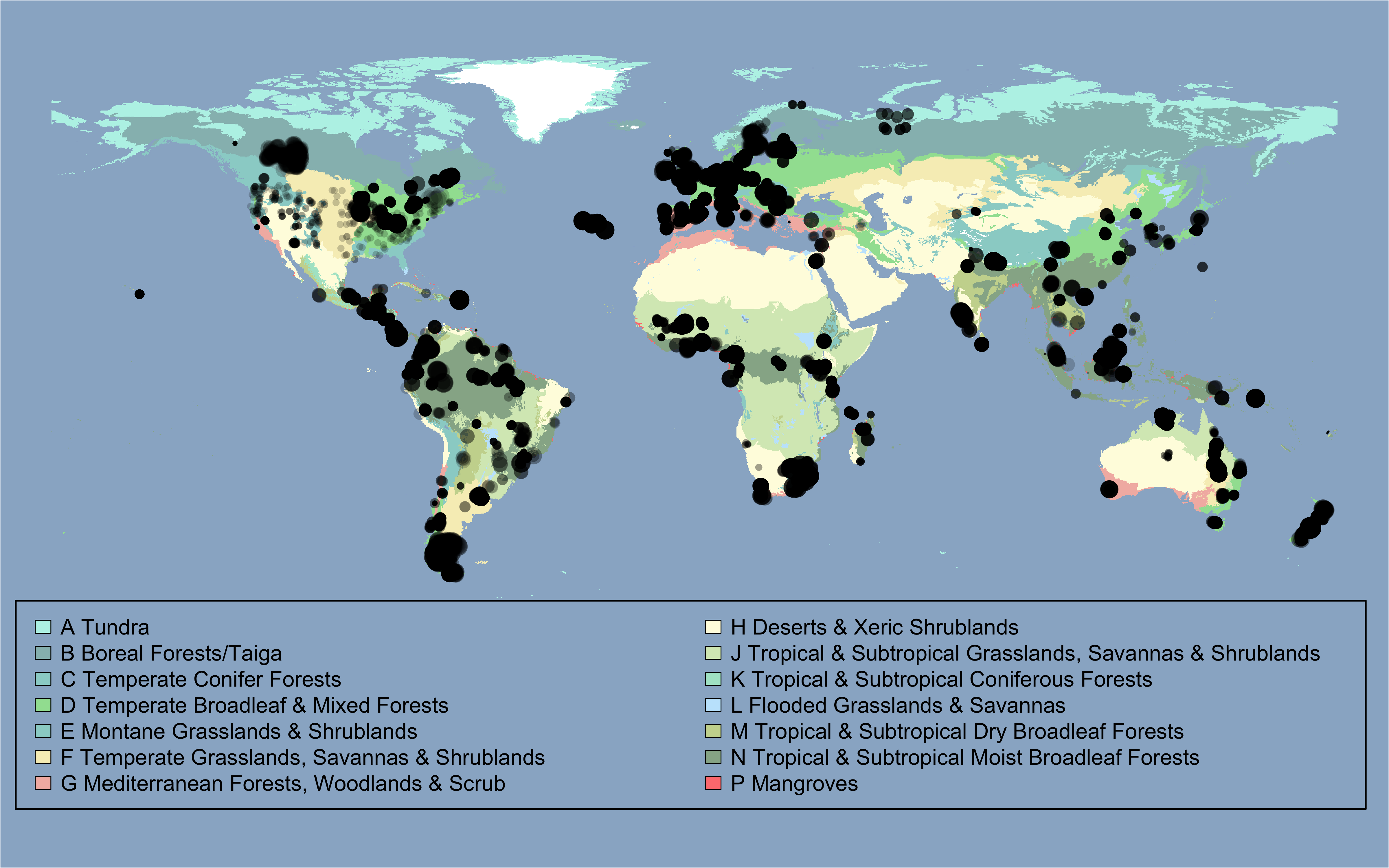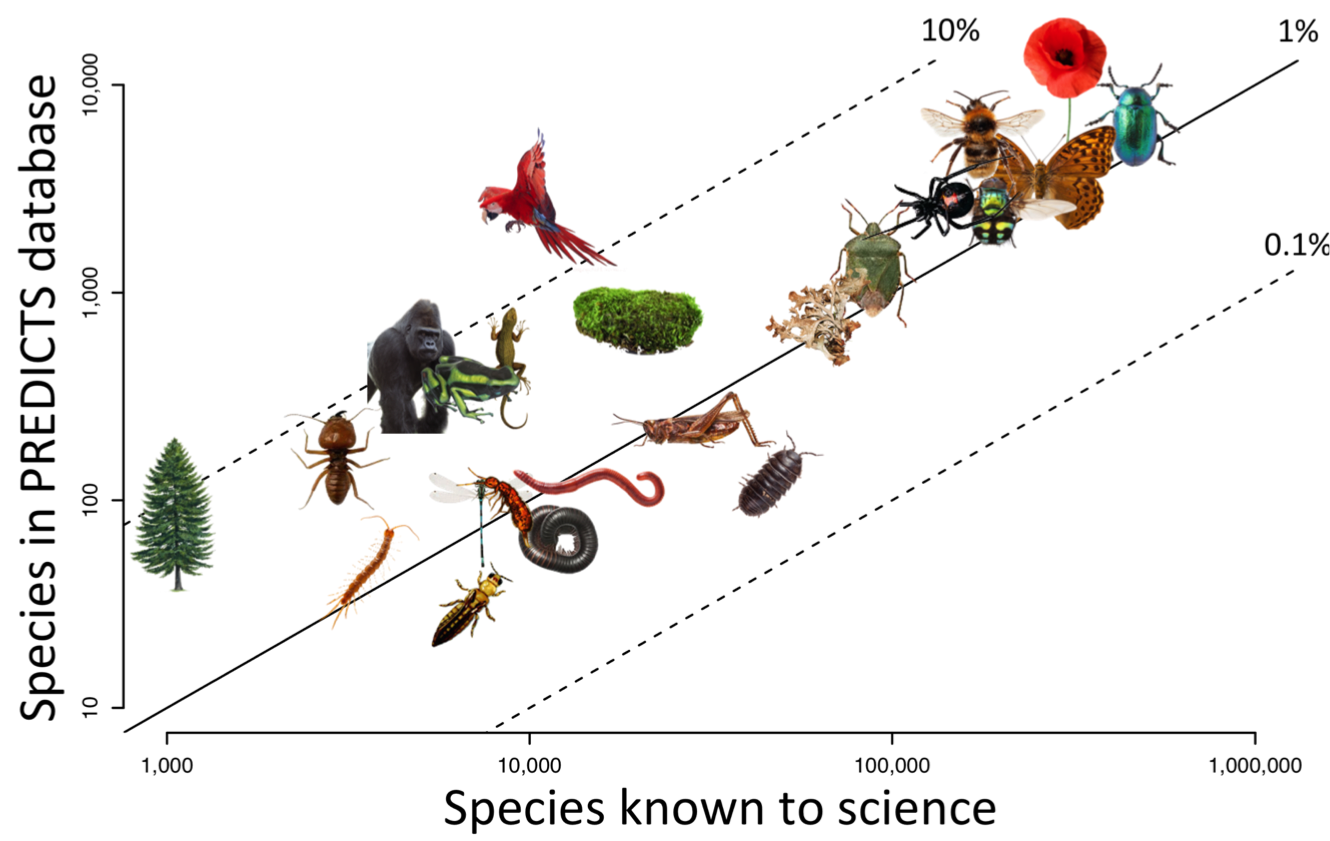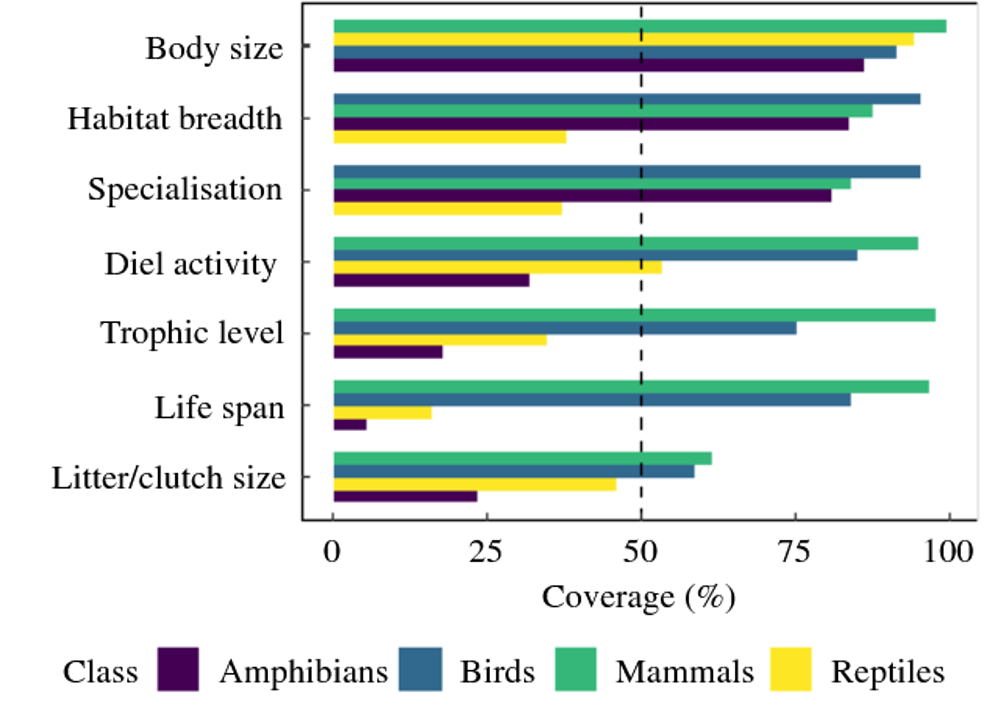Outputs
Communicating Science
I have contributed to two articles in The Conversation magazine:
| - On the threat to tropical and Mediterranean biodiversity |
| - On the impacts of climate change on bumblebees |
I have been interviewed for two podcasts:
| - A feature in The Economist on biodiversity modelling |
| - For the Savage Minds podcast |
My projections of the potential impact of future climate change on global terrestrial vertebrate biodiversity feature in the Perry World House Global Climate Security Atlas
Policy Outputs
My research has been featured in the following policy reports and documents:
| - The IPCC's sixth Assessment Report (AR6), which featured among its evidence on biodiversity impacts my 2018 paper projecting future global effects of climate and land-use change, and Peter Soroye's paper on the impact on bumblebees of exceedance of thermal tolerance limits |
| - The IPBES Global Assessment, including in the Summary for Policymakers |
| - The IPBES land degradation report, including in the Summary for Policymakers |
| - The United Nations Environment Programme Global Environment Outlook 6. |
| - The IPCC's Special Report on 1.5°. |
| - WWF's Living Planet Report 2016 and Living Planet Report 2018 |
| - The UK State of Nature 2016 report. |
| - The Convention on Biological Diversity's Global Biodiversity Outlook 4 report. |
| - Report to the Convention on Biological Diversity's Subsidiary Body on Scientific, Technical and Technological Advice: Update On Climate Geoengineering In Relation To The Convention On Biological Diversity: Potential Impacts And Regulatory Framework. |
| - The United Nations Environment Programme's report Towards a Global Map of Natural Capital: Key Ecosystem Assets. |
| - The Cambridge Institute for Sustainability Leadership's report Biodiversity and ecosystem services in corporate natural capital accounting, and in the associated technical paper Biodiversity and ecosystem services in environmental profit & loss accounts, in which my PREDICTS work features more explicitly. |
| - A UK House of Commons debate on Global Biodiversity |
| - Members of my research group submitted written evidence to a UK Government Environmental Audit Committee consultation on environmental change and food security |
I was a contributing author to the following reports:
| - WWF's Living Planet Report 2022 |
| - WWF's Living Planet Report 2020 |
| - The UK State of Nature 2016 report. |
| - The Convention on Biological Diversity's Global Biodiversity Outlook 4 report. |
My work was also cited in the following additional reports:
| - The IPCC's Special Report on 1.5°. |
| - the UK Treasury's Dasgupta Review on the economics of biodiversity |
| - an IPCC-IPBES joint report on Biodiversity and Climate Change |
| - World Bank reports on climate change impacts on financial markets and on protected areas. |
| - The Cambridge Institute for Sustainability Leadership's report Biodiversity and ecosystem services in corporate natural capital accounting, and in the associated technical paper Biodiversity and ecosystem services in environmental profit & loss accounts, in which my PREDICTS work features more explicitly. |
I have also contributed expert advice to the following reports:
| - The Royal Society's Living Landscapes Public Consultation |
| - The Environmental Audit Committee's Consultation on Biodiversity and Ecosystems |
| - The Parliamentary Office of Science & Technology POSTNote on Effective Biodiversity Indicators |
| - The Parliamentary Office of Science & Technology Horizon Scanning exercise on the environmental impacts of agriculture |
| - The Parliamentary Office of Science & Technology Research Briefing on Sustainable Land Management |
| - The Parliamentary Office of Science & Technology POSTNote on Climate Adaptation for Nature |
Software
The Madingley Model
The Madingley Model is an individual-based mechanistic models of the world's terrestrial and marine ecosystems. It represents all autotrophs (plants and phytoplankton) and all animals larger than 10 μg. The map below shows predicted spatial patterns in total animal biomass. The model can be downloaded freely here.

Data
The PREDICTS database
The database of the PREDICTS Project, which I helped to create, was publicly released for the first time in December 2016. You can download the full database from the data portal of the Natural History Museum. Below are a map of the sites with data, and a graph showing the taxonomic coverage of the database (estimated numbers of species represented in the PREDICTS database against estimated numbers of species described to science for major groups of species).


Global Vertebrate Trait Data
Adrienne Etard led a global compilation of available trait data for vertebrate species. The collation, including its gaps and biases, is described in a paper in Global Ecology & Biogeography. The full data collation can be downloaded from Figshare.

Global List of Pollinating Species
Joe Millard compiled a global list of pollinating species during his PhD. An initial list was created by automatic text extraction from papers about pollination (Millard et al., 2020). This initial list was then manually checked, and further checked by a selection of global pollination experts (Millard et al., 2021). The data have now been made publicly available.
Data/materials from papers
Many of my recent papers have been accompanied by publicly available code or datasets - either the data used in the study or outputs of the results. If you are interested in data from other papers, please contact me to discuss the possibilities.